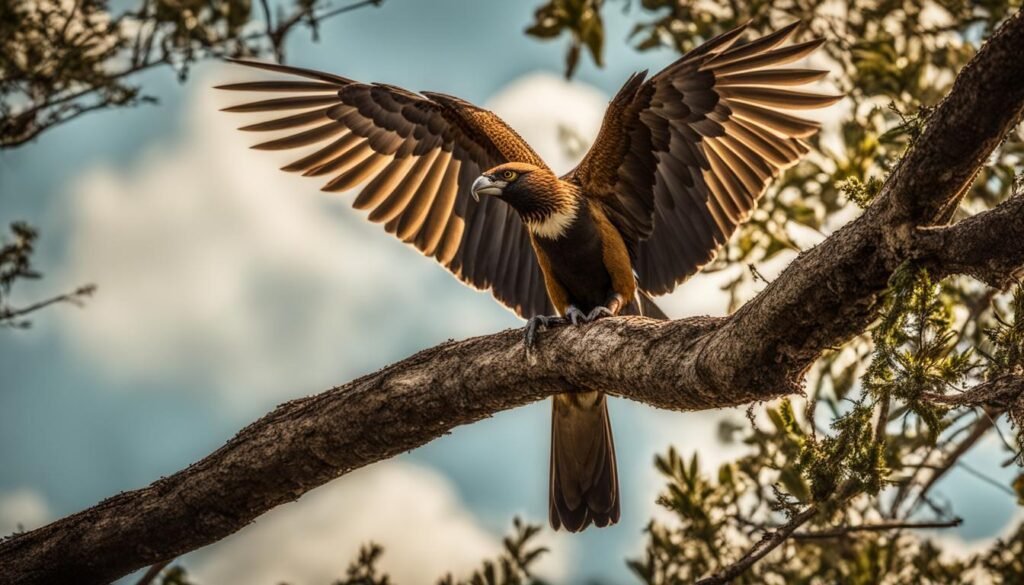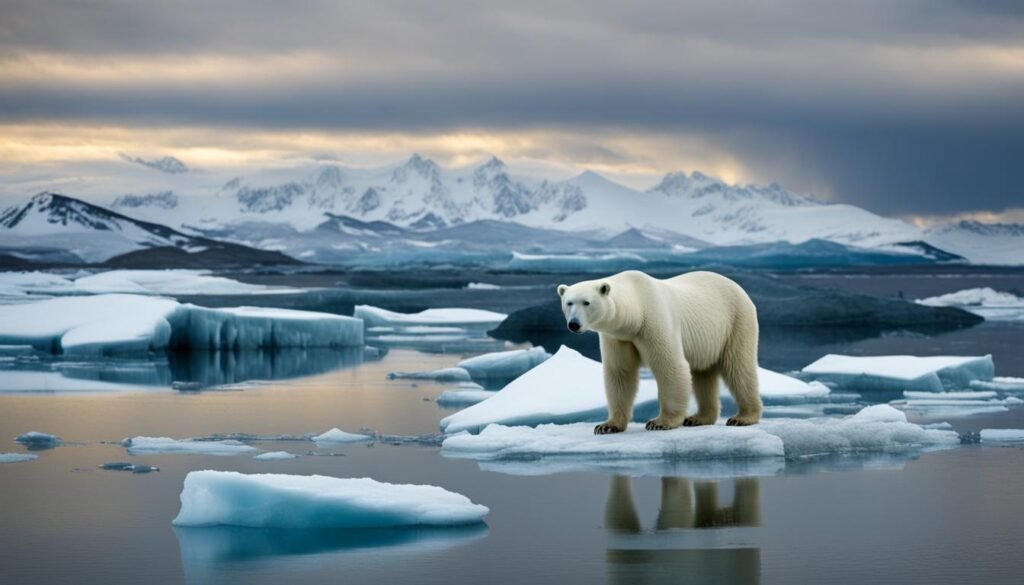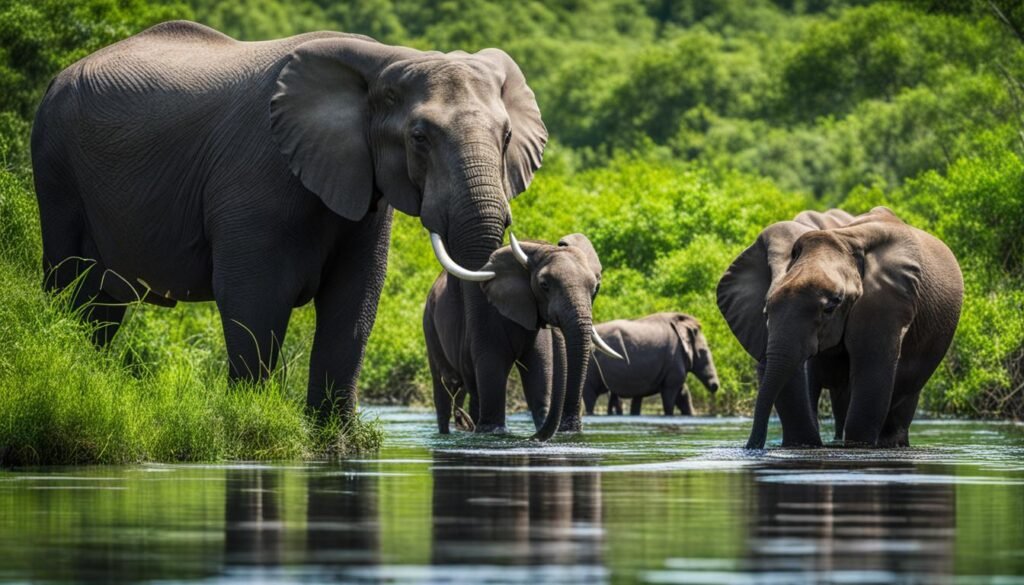I am excited to share with you the importance of protecting endangered species and the efforts being made to preserve their habitats. The United States is home to a diverse range of wildlife, but unfortunately, many of these animals are at risk of extinction. Factors such as habitat loss and the spread of invasive species have pushed numerous species to the brink.
One state that has taken significant steps to protect its wildlife is California. The state has identified and classified various animals as either fully protected species or protected fish under its legislation. This designation ensures that these animals receive the highest level of legal protection to prevent their decline and support their recovery.
Key Takeaways:
- The United States is home to a wide range of plant and animal species at risk of extinction.
- More than 1,600 plants and animals are already listed as threatened or endangered under the Endangered Species Act.
- California has laws in place to protect fully protected species and specific fish species.
- Preserving endangered species and their habitats is vital for maintaining a balanced ecosystem.
- Efforts are being made to strengthen wildlife protection laws and advocate for increased funding for conservation programs.
The Importance of Protecting Endangered Species
Endangered species play a crucial role in maintaining a balanced ecosystem and the overall health of our planet. The loss of even a single species can have far-reaching effects on the food chain and the environment as a whole.
The Endangered Species Act, enacted in 1973, provides legal protection for endangered and threatened species and their critical habitats. This legislation aims to preserve the unique biodiversity and natural heritage that these species contribute to our world.
By designating certain species as federally protected animals, we acknowledge their importance and commit to safeguarding their survival. These protections extend not only to well-known animals such as elephants and tigers but also to lesser-known animals like protected birds and marine creatures.

What is a protected species? A protected species refers to a group of plants, animals, or other organisms elevated to a special legal status due to their declining population and vulnerability to extinction. These species receive extra protections under the law, including restrictions on hunting, trade, and habitat destruction.
It is vital to protect and preserve these species to ensure the future sustainability of our planet. By safeguarding their habitats, addressing threats such as habitat loss and climate change, and promoting responsible conservation practices, we can help these endangered creatures thrive and contribute to a resilient, biodiverse environment.
Efforts to Protect Endangered Species
The National Wildlife Federation is dedicated to safeguarding endangered species and advocating for their conservation. As an organization, we focus on defending and strengthening the Endangered Species Act, along with other core wildlife protection laws. We hold federal agencies accountable for complying with these laws and tirelessly advocate for increased funding for conservation programs.
One of our primary objectives is to protect, restore, and connect habitats for endangered species. By focusing on preserving their natural environments, we can reduce threats such as habitat loss and the spread of invasive species. This approach ensures that endangered species have safe spaces to thrive and increases their chances of survival in the wild.
In addition to habitat conservation, we actively support state wildlife action plans. These comprehensive plans are designed to prevent the decline of endangered species and maintain healthy populations. By working collaboratively with state agencies and stakeholders, we can identify key actions and implement targeted strategies to protect and conserve these vulnerable species.
Through our efforts, we aim to safeguard the vast array of species on the protected species list and mitigate the risks faced by endangered animals in the wild. By advocating for stronger protections, restoring and preserving habitats, and supporting state wildlife action plans, we strive to ensure a future where all wildlife thrives in harmony with their environment.
The Impact of Climate Change on Endangered Species
Climate change poses a significant challenge to the preservation and conservation of endangered species. As temperatures continue to rise and weather patterns become increasingly erratic, these changes directly impact the survival and habitats of vulnerable species.
Rising temperatures can lead to the loss of critical habitats, as well as disrupt the delicate balance of ecosystems. Many species rely on specific environmental conditions for feeding, breeding, and migration. When these conditions change, it can have detrimental effects on their ability to thrive and reproduce.
Furthermore, climate change can exacerbate the effects of other threats that endangered species already face. For example, invasive species, which can outcompete native species for resources and disrupt natural ecosystems, may thrive under warmer climates.
Additionally, the increased frequency and intensity of wildfires, influenced by climate change, can also have devastating consequences for endangered species. Wildfires can destroy habitats, decimate food sources, and displace animals, further endangering already vulnerable populations.

The National Wildlife Federation recognizes the urgent need to address the impact of climate change on endangered species. As a leading organization in wildlife preservation and conservation, they are actively involved in developing innovative approaches for climate-smart conservation.
By advocating for sustainable practices, promoting habitat protection, and supporting research on climate change adaptation, the National Wildlife Federation is working towards preserving endangered species and safeguarding their habitats in the face of a changing climate.
Conclusion
Ecological preservation and biodiversity conservation are of utmost importance to ensure the well-being of our planet. The National Wildlife Federation, along with government regulations like the Endangered Species Act, has been actively involved in animal preservation and habitat conservation efforts. By supporting and participating in conservation programs, we can help secure a future where endangered species thrive and ecosystems remain intact.
Protecting endangered species is not just about preserving individual species, but also about maintaining the delicate balance of the entire ecosystem. Each species plays a unique role in the web of life, and their loss can have ripple effects throughout the environment. Habitat conservation is key to creating a safe and sustainable environment for these species.
Conservation efforts should not be limited to these initiatives alone. Raising awareness among individuals and communities about the importance of protecting endangered species is crucial. By educating ourselves and others, we can inspire action and foster a sense of responsibility towards the environment.
We must continue to support conservation programs, advocate for stronger regulations, and take decisive action to protect endangered species and their habitats. Through collective efforts, we can nurture a world that values and prioritizes the preservation of our rich biodiversity for the benefit of current and future generations.
FAQ
What does it mean for an animal to be protected?
When an animal is protected, it means there are laws and regulations in place to safeguard its population and habitat from harm. These laws can vary depending on the species and its status, but they generally aim to prevent activities that may lead to the decline or extinction of the animal.
What are some examples of fully protected species in California?
California has several fully protected species, including the California condor, the Pacific pocket mouse, and the San Francisco garter snake. These species receive the highest level of protection, and it is illegal to harm, harass, or kill them without proper authorization.
Are fish protected under wildlife conservation laws in California?
Yes, fish are also protected under wildlife conservation laws in California. The state has regulations in place to manage and protect fish populations, including measures to prevent overfishing, habitat destruction, and pollution.
What animals are considered federally protected?
Federally protected species are those that are listed under the Endangered Species Act by the U.S. Fish and Wildlife Service. Examples of federally protected animals include the bald eagle, gray wolf, and humpback whale.
How can I access the list of protected species?
The list of protected species can be accessed through the U.S. Fish and Wildlife Service’s official website. They provide comprehensive information on federally protected animals, including their status, habitat requirements, and conservation efforts.
What is the difference between an endangered species and a threatened species?
An endangered species is one that is at risk of extinction throughout all or a significant portion of its range. A threatened species, on the other hand, is one that is likely to become endangered in the near future if the current threats continue.
How does wildlife conservation help protect endangered species?
Wildlife conservation plays a crucial role in protecting endangered species by establishing protected areas, implementing habitat restoration projects, and monitoring populations. Conservation efforts also focus on reducing threats such as poaching, habitat loss, and pollution.
What can I do to contribute to the preservation of endangered species?
There are several ways you can contribute to the preservation of endangered species. You can support conservation organizations financially or through volunteer work, raise awareness about endangered species in your community, and make sustainable choices that reduce your impact on the environment.
How does climate change affect endangered species?
Climate change can have a profound impact on endangered species. Rising temperatures can disrupt breeding cycles, alter migration patterns, and reduce the availability of suitable habitats. It can also increase the frequency and intensity of extreme weather events, such as hurricanes and wildfires, which can further threaten already vulnerable species.
What are some climate-smart conservation strategies for protecting endangered species?
Climate-smart conservation strategies involve adapting to and mitigating the effects of climate change on endangered species. These strategies may include creating wildlife corridors to facilitate species’ movements, restoring and protecting critical habitats, and implementing measures to reduce greenhouse gas emissions and combat climate change.
Why is preserving biodiversity important for the environment?
Preserving biodiversity is important for the environment because it helps maintain ecosystem stability, enhances resilience to environmental changes, and supports essential ecological processes such as pollination, nutrient cycling, and pest control. Biodiversity also provides us with valuable resources, such as food, medicine, and materials for construction and manufacturing.
How can individuals contribute to habitat conservation?
Individuals can contribute to habitat conservation by supporting land conservation efforts, planting native species in their gardens, reducing their use of pesticides and fertilizers, and participating in citizen science projects that monitor and protect habitats. It is also important to practice responsible recreational activities in natural areas to minimize disturbance to wildlife and their habitats.
What is the role of conservation programs in protecting endangered species?
Conservation programs play a crucial role in protecting endangered species by providing funding, research, and support for conservation efforts. These programs often involve collaborations between government agencies, non-profit organizations, scientists, and communities to develop and implement effective strategies for species conservation and habitat protection.







